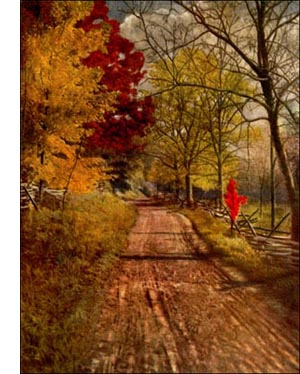Canoe Birch or Paper Birch Tree
 Canoe Birch, Paper Birch (Betula papyrifera, Marsh.)Large tree, 60 to 80 feet high, with few erect, large limbs and numerous horizontal branches with flexible twigs, forming a broad, open head. Bark dull, chalky white, when exposed to the sun, stripping horizontally into thin sheets, with frayed edges; chalk rubs off. Wood light brown, reddish, light, hard, tough, close grained. Buds resinous, dark brown, sharp pointed. Leaves 2 to 3 inches long, ovate, abruptly pointed, finely and irregularly serrate, thick, dull, dark green, with paler lining, yellow in autumn; midrib raised and marked with black dots; petioles grooved, downy, slender. Flowers monoecious, April, before leaves; staminate catkins, 3 to 4 inches long, pendulous, clustered or paired; pistillate catkins, 1 to 1 1/2 inches long, on stalks 1 inch long; scales tapering; pistils red. Fruit slender cones 1 z inches long, cylindrical, stalked; scales smooth, 3-lobed, two outer points smaller than middle one; seed oval, with broad wings. Preferred habitat, river banks and rich slopes of mountains. Distribution, Labrador to Alaskan coast; south to Long Island, northern Pennsylvania, central Michigan and Minnesota, northern Nebraska, Black Hills, northern Montana and northwestern Washington. Uses: Picturesque, graceful ornamental tree; hardy, rapid grower, vigorous, easily transplanted; wood used for spools, shoe lasts, wood pulp and fuel. Starchy cambium furnishes food to Indians and trappers. Bark used for canoes, letter paper and a great variety of articles, useful and decorative.
Canoe Birch, Paper Birch (Betula papyrifera, Marsh.)Large tree, 60 to 80 feet high, with few erect, large limbs and numerous horizontal branches with flexible twigs, forming a broad, open head. Bark dull, chalky white, when exposed to the sun, stripping horizontally into thin sheets, with frayed edges; chalk rubs off. Wood light brown, reddish, light, hard, tough, close grained. Buds resinous, dark brown, sharp pointed. Leaves 2 to 3 inches long, ovate, abruptly pointed, finely and irregularly serrate, thick, dull, dark green, with paler lining, yellow in autumn; midrib raised and marked with black dots; petioles grooved, downy, slender. Flowers monoecious, April, before leaves; staminate catkins, 3 to 4 inches long, pendulous, clustered or paired; pistillate catkins, 1 to 1 1/2 inches long, on stalks 1 inch long; scales tapering; pistils red. Fruit slender cones 1 z inches long, cylindrical, stalked; scales smooth, 3-lobed, two outer points smaller than middle one; seed oval, with broad wings. Preferred habitat, river banks and rich slopes of mountains. Distribution, Labrador to Alaskan coast; south to Long Island, northern Pennsylvania, central Michigan and Minnesota, northern Nebraska, Black Hills, northern Montana and northwestern Washington. Uses: Picturesque, graceful ornamental tree; hardy, rapid grower, vigorous, easily transplanted; wood used for spools, shoe lasts, wood pulp and fuel. Starchy cambium furnishes food to Indians and trappers. Bark used for canoes, letter paper and a great variety of articles, useful and decorative.The Indians easily proved their ingenuity in the uses of the paper birch. They framed their tents of it, and built canoes, ribbing them with cedar, and covering them with large sheets of birch bark. They sewed the seams with threads made of spruce or cedar roots, and closed the chinks with pitch or gum of the Balm of Gilead. These small craft were graceful and durable, and the Indian managed them with consummate skill. An early letter writer from the colonies described these "delicate canowes so light that two men will transport one of them overland whither they list, and one of them will transporte tenne or twelve Salvages by water at a time." Hunters and trappers, following clumsily the Indian's example, are able to supply their camps with all necessary utensils, such as baskets, buckets, dippers, dishes-all made of this material. The weather is never so wet but that fragments of birch burn merrily to start a campfire.
The range of the canoe birch is remarkable. I t reaches a higher latitude than any other deciduous tree, and covers a wider territory. It is a noticeable feature of the almost continuous forest that once stretched from Newfoundland to Washington state, south to Nebraska and Pennsylvania and north to within the Arctic circle.
The bark, which gives name and character to this tree, is distinguishable from the white bark of other species by its pearly surface and chalky whiteness which rubs off on clothing. It strips readily into thin horizontal sheets, marked with elongated lenticels, or breathing holes. The feminine tourist in Northern woods loses no time in supplying herself with birch-bark note paper. The bark is usually removed in thick plates, from which the thin sheets may be stripped at leisure. These sheets are orange coloured, with a faint purplish bloom upon them, and darker, purplish lines. Alas! for the zeal of these tourists. They usually cut too deep, and the strip that tears off so evenly, girdles and kills the tree, because nothing is left to protect the living cambium. A black band (of mourning) soon marks the doomed tree, and it eventually snaps off in the wind.
The strain of the growing wood breaks the bark here and there and it curls back at the broken edges. Strips gradually come off, on trunk and branches, leaving black bands. But this is not a very shaggy birch. The pearly lustre of its clean white bark and the density of its lustrous foliage make t3. papyrifera one of the most beautiful, as it is one of the largest, of our native birches.